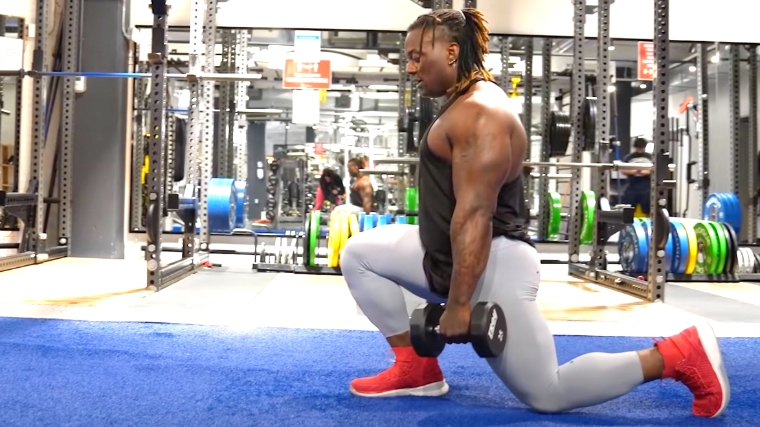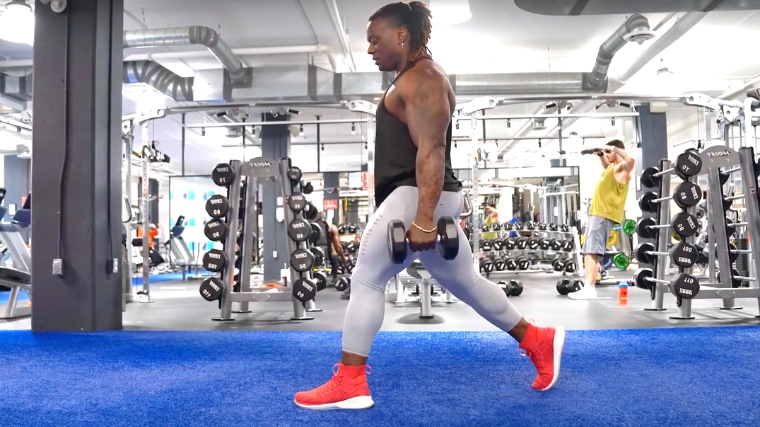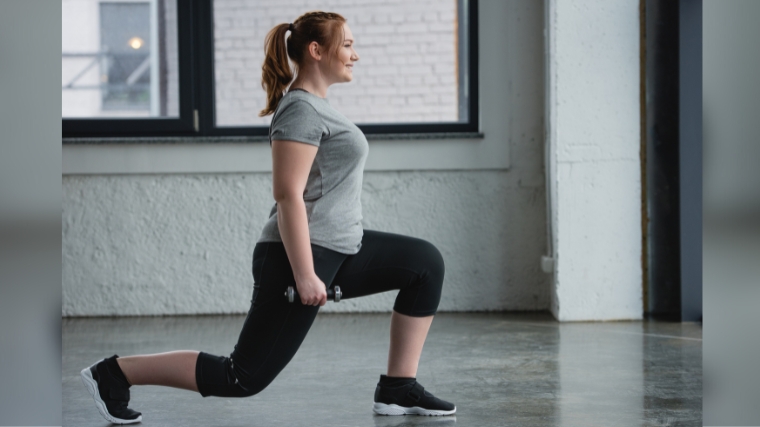This
post was originally published on
this sitehttp://www.marksdailyapple.com/
 The health world is fixated on fiber, constantly telling us how important fiber is and how we should all be eating more of it. Back in the day, our cultural obsession with fiber was all about being “regular.” You had to load up on fiber to keep things moving, so to speak. Nothing was more important. So we started our days with bland, tooth-cracking breakfast cereal that tasted like tree bark and sparked no joy. But hey, it was loaded with fiber and therefore good for us, right?
The health world is fixated on fiber, constantly telling us how important fiber is and how we should all be eating more of it. Back in the day, our cultural obsession with fiber was all about being “regular.” You had to load up on fiber to keep things moving, so to speak. Nothing was more important. So we started our days with bland, tooth-cracking breakfast cereal that tasted like tree bark and sparked no joy. But hey, it was loaded with fiber and therefore good for us, right?
I’ve long been skeptical of that particular story, mostly because every major health agency that recommends higher fiber intake also says that we should get much of that fiber from whole grains. And you know how I feel about that. If whole grains aren’t essential (or even healthy, if you ask me), then how could the fiber they provide be essential? It doesn’t add up.
Now, though, as we learn ever more about the emerging science of the microbiome, the fiber story is starting to shift. It’s become less about pushing “roughage” through our colons to create bulkier, more impressive bowel movements (although some people still promote this supposed benefit). Certain types of fiber, it turns out, are essentially food for the microbes living in our guts.
The health (and composition) of the gut flora helps determine the health of the human host (that’s you). It’s not clear what exactly constitutes “healthy gut flora,” and we’re still teasing out exactly how it affects the various physiological functions, but we know we need them and we know they need to eat something to even have a chance at helping us. Not all fiber is created equal in this respect.
Thus, when it comes to fiber, it’s important to understand what it does, what you want it to do, and what types are likely to be helpful or harmful.
Understanding the Types of Dietary Fiber
The tricky thing about fiber is it’s not a monolith. There are dozens of varieties. Some of them perform similar functions in the body, but others have extremely unique effects. We can’t talk about fiber without understanding that the word describes a variety of compounds, and this leads to a lot of confusion. People make blanket statements that might be true for some types of fibers and incorrect for others.
Broadly speaking, fiber is any plant component that we eat but do not metabolize directly. Since we can’t digest these materials, they pass through our small intestine without being broken down and absorbed—which means they make it to the lower reaches of the GI tract more or less intact. And this is important for reasons we’ll discuss shortly.
There are various ways of classifying the different types of fiber, the most common one being insoluble versus soluble fiber. Insoluble fiber is a bulking agent, increasing the mass of the stool, which actually moves the stool more quickly through the intestines. Except for perhaps relieving constipation (“perhaps” because it doesn’t work for everyone and may even have the opposite effect), I’m unconvinced that insoluble fiber has much to offer in terms of health benefits.
Soluble fiber, on the other hand, is interesting. Soluble fiber can absorb water, which enhances the thickness of the stomach’s contents. This slows stomach emptying, which can give the body more time to absorb nutrients. More importantly, most types of soluble fiber are fermentable by gut microbes (psyllium and methylcellulose are exceptions). In other words, they act as food for the trillions of microorganisms that inhabit your GI tract, especially in your colon. Insoluble fiber doesn’t ferment very well, so it does little to support your gut bugs.
Fermentable fibers are also called prebiotic fibers, a term you’re probably familiar with, or microbiota-accessible carbohydrates (aka MACs). There are lots of different types of soluble, fermentable fibers including
- Fructo-oligosaccharides
- Galacto-oligosaccharides
- Pectins
- Inulin
- Beta-glucan
- Gums (such as xanthan gum, carrageenan, guar gum)
- Type IV resistant starch
Each has a unique effect on the composition of your microbiome, promoting some beneficial species while suppressing others.
When gut microbes ferment these types of fibers, they produce a variety of end products, or postbiotics. These include certain vitamins and neurotransmitters and, notably, short-chain fatty acids (SCFAs) like butyrate, propionate, and acetate. SCFAs, it turns out, do all sorts of interesting things in the body. Many of the benefits attributed to “fiber” are probably more accurately characterized as benefits due to the effects of SCFAs.
What Are the Benefits of Fiber Consumption?
The biggest benefit of fiber, based on what we know now, is that fermentable fiber in particular supports a healthy and diverse microbiome.It’s difficult to name a physiological function or health parameter that is not impacted by the gut microbiome, including but not limited to digestive, cognitive and neurological, immune, psychological, metabolic, and liver health.
By feeding and bolstering the populations of “good bacteria,” we reduce the amount of available real estate for “bad bacteria” to set up shop. Beyond that, the SCFAs that are byproducts of fiber fermentation, including butyrate, propionate, and acetate, improve our health in many ways. I’ve covered the health benefits of prebiotics and postbiotics in depth in other posts, and many, if not most, of those can be chalked up to SCFAs.
Butyrate in particular has been shown to have beneficial effects on insulin sensitivity and inflammation, both of which contribute to all manner of modern, non-communicable disease. It’s also the preferred fuel source for our native colonic cells. Basically, without enough butyrate (and, by extension, fermentable prebiotic fiber to make it), our colons don’t work as well as they should. This can lead to digestive impairments and perhaps even cancer. Mucin-degrading bacteria predominate in colorectal cancer patients, for example, while butyrate-producing bacteria rule the roost in healthy patients without cancer. Populations with lower rates of colorectal cancer also tend to have higher levels of butyrate. Propionate is helpful, too, though not to the extent of butyrate.
Ok, But What About Poop?
But fiber does help with, ahem, performance in the bathroom, right?
This one’s a mixed bag. A recent meta-analysis concluded that while increasing insoluble dietary fiber does increase the frequency of bowel movements, it does nothing for stool consistency, treatment success, laxative use, and painful defecation. So it will make you poop more often, sure, but if you’re experiencing pain, each bowel movement is still going to hurt, and you’re still going to need laxatives to do it. Galacto-oligosaccharides, guar gum, and inulin, all prebiotic fibers, also appear to improve constipation. However, other research finds that stopping or dialing back dietary fiber intake reduces constipation.
Folks with gastrointestinal disorders like IBS and IBD that can cause constipation or diarrhea should proceed with caution, as the evidence for fiber’s benefits is inconsistent in these populations. One survey of Crohn’s patients found that those eating more fiber (23 grams/day) had fewer flare-ups than those eating less (10 grams/day), while colitis patients reported no difference in symptoms based on fiber intake. On the other hand, studies indicate that a low-FODMAP diet, which eliminates most sources of fiber, especially fermentable prebiotic fiber, is an effective treatment for IBS and IBD. Low-FODMAP diets have been shown to reduce bloating, abdominal pain, quality of life, and overall symptoms in intestinal disorders.
How Much Fiber Do You Need?
The official recommendations from the Institute of Medicine are 25 grams per day for women under 50 and 38 grams per day for men under 50 (21 grams and 30 grams, respectively, once you enter your sixth decade). The USDA says you should aim for 14 grams of fiber for every 1,000 calories you consume.
However, I have a real problem with those recommendations because they lump all types of fiber together. They make no distinction between the types that serve only to create impressive poops and those that your gut microbes can ferment. It’s all just “fiber” according to these guys. But fiber isn’t fiber isn’t fiber.
And we can’t ignore the elephant in the room: the loud chorus coming from the direction of the carnivore movement proclaiming that dietary fiber is largely or wholly unnecessary. I’m open to the possibility that a properly constructed carnivorous diet (which may, remember, include gristly animal fiber) obviates the need for plant fiber, prebiotic or otherwise. We don’t have strong data to support that claim yet, but it might be true. A person’s microbiome composition shifts in response to dietary changes. It’s possible that people who eat lots of plants need lots of fiber to feed the microbes that are there because they eat a lot of plants. And people who eat mostly meat have a microbiome tailored to a low-plant diet; thus, they don’t need a lot of plant fiber to thrive. Like begets like, as it were.
That’s possible. The problem is that most humans throughout history and prehistory probably consumed diets that by today’s standards would be considered very high-fiber, perhaps averaging 100 grams or more of fiber per day. Coprolite (read: ancient fossilized stool) studies indicate that our ancestors may have consumed a significant amount of prebiotics. That means our bodies have come to expect the metabolites that gut bacteria produce by fermenting that fiber. We can get butyrate from collagen and gelatin, but is it enough? I’m not sure.
How to Increase Fiber Consumption and Stay Primal
Let’s say you want to experiment with increasing your fiber consumption, perhaps as an experiment to see how it will affect gut health and digestion. You certainly don’t need to increase your grain intake to do so. As you’d expect, I explicitly do not recommend you do that.
Setting aside the obvious downsides of grain consumption, whole or otherwise, grains contain predominantly insoluble, non-fermentable fiber (oats being the notable exception). The better way to increase your consumption of soluble, fermentable fiber is to eat plenty of vegetables, the more variety the better. You can throw in some legumes if they’re part of your repertoire (watch your total carb intake), but it’s not necessary. Top it off with some fermented dairy like full-fat kefir or yogurt. That provides galacto-oligosaccharides plus beneficial probiotics to further seed the microbiome.
Especially if you have digestive issues, constipation, or chronic diarrhea, go slowly and pay attention to how fiber affects your symptoms. Allow time for your gut flora to adjust to the new food source. Expect flatulence.
Bottom Line
As you can see, the fiber story isn’t simple. At all. While I don’t think all the pro-fiber furor stands up to scrutiny, I’m also not ready to write it off as immaterial to human health. Heck, the only food that’s actually expressly “designed” to feed humans—breast milk—contains prebiotic compounds whose main purpose is to feed and cultivate healthy gut flora in infants, which suggests that the need for prebiotics is innate.
Overall, because the health of our gut community is inextricably tied to the health of our minds and bodies, I think attaining fermentable fiber through the fruits and vegetables we eat is important. Do I think everyone should be supplementing with prebiotic fiber? No. I add inulin to my Primal Fuel protein powder, mostly to improve mouth-feel but also to feed beneficial microbes and increase butyrate production. Sometimes I use raw potato starch for its considerable resistant starch content, often just mixing it into sparkling water and drinking it straight.
But for the most part, the fiber I eat is incidental to the foods I consume. Berries, non-starchy vegetables, jicama, garlic, onions, mushrooms, green bananas, nuts and seeds—these are all foods rich in fiber, particularly prebiotic fiber. If you’re eating varied and diverse Primal foods, your bases are probably adequately covered when it comes to fiber too.
What do you think, folks? How has fiber helped or harmed you? I’d love to hear from everyone.
Take care and be well.
The post What Does Fiber Do, And Do You Need More? appeared first on Mark’s Daily Apple.








 Potatoes get a bad rap in many different health and diet communities. The keto and low-carb crowd says they’re too high in carbohydrates and will spike your blood sugar. The paleo guys are against them because they are neolithic foods from the New World that our Paleolithic ancestors had no access to. The autoimmune diet communities eschew them because they have various plant toxins that can cause inflammation and trigger sensitive and vulnerable individuals, and the conventional “healthy diet” people recommend against potatoes because they’re “empty white carbs.”
Potatoes get a bad rap in many different health and diet communities. The keto and low-carb crowd says they’re too high in carbohydrates and will spike your blood sugar. The paleo guys are against them because they are neolithic foods from the New World that our Paleolithic ancestors had no access to. The autoimmune diet communities eschew them because they have various plant toxins that can cause inflammation and trigger sensitive and vulnerable individuals, and the conventional “healthy diet” people recommend against potatoes because they’re “empty white carbs.”
 The health world is fixated on fiber, constantly telling us how important fiber is and how we should all be eating more of it. Back in the day, our cultural obsession with fiber was all about being “regular.” You had to load up on fiber to keep things moving, so to speak. Nothing was more important. So we started our days with bland, tooth-cracking breakfast cereal that tasted like tree bark and sparked no joy. But hey, it was loaded with fiber and therefore good for us, right?
The health world is fixated on fiber, constantly telling us how important fiber is and how we should all be eating more of it. Back in the day, our cultural obsession with fiber was all about being “regular.” You had to load up on fiber to keep things moving, so to speak. Nothing was more important. So we started our days with bland, tooth-cracking breakfast cereal that tasted like tree bark and sparked no joy. But hey, it was loaded with fiber and therefore good for us, right? 
 For now classes are 6pm and 640pm at 2840 Wildwood st in the Boise Cloggers studio.
Book your class NOW!
click this ==>
For now classes are 6pm and 640pm at 2840 Wildwood st in the Boise Cloggers studio.
Book your class NOW!
click this ==>








